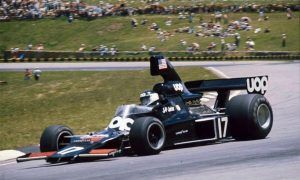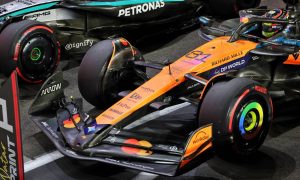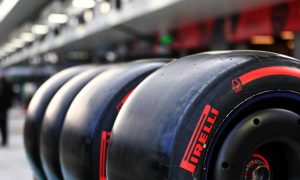
Pirelli’s F1 chief engineer Simone Berra says that the decision not to go ahead with a ban on tyre blankets in F1 will help the company in its efforts to improve the performance of its tyres in races.
The Italian manufacturer won its bid to retain the exclusive contract to supply tyres to F1 teams in October, seeing off rivals Bridgestone in a fierce competitive tender process.
Pirelli has held the contract since 2011, but faced criticism for the performance of its tyres in recent years, and has indicated it might walk away from the wort the end of the new contract in 2027.
This year's compounds have been accused of excessive thermal degradation and overheating, making it impossible for teams to be confident of getting their set-ups right for a race.
Senior sources in the F1 paddock have declared the tyres to be the ‘enemy of racing’ because drivers and teams are having to spend more time managing their tyres leaving them unable to push hard and pull off overtaking moves.
The issue was even raised at the most recent F1 Commission where there were calls for improving the 'raceability' of tyres in future.
The same meeting also confirmed that plans to scrap tyre warming blankets used by teams in pit lane and on the grid to get tyres up to working temperature were being dropped.
Berra said that this would help Pirelli to focus on the issue of improving the performance of the tyres.
“At least now the target is clear, and clearer compared to previous weeks,” he stated. “We know that we need to work in 2024 with development tests to produce a new generation of compounds, and this will be the target."
“We'll continue to improve the reliability of the tyres in terms of structure," he continued. "But the compounds will be the focus for our 2024 development plan, and we will work obviously more focusing towards the overheating.”

“We want to try to understand why, from 2022 to 2023, the overheating effect was higher. What was the reason?” he explained. “After this analysis, we'll try to understand where to work on the compounds to improve this aspect.
“Obviously we would like to have drivers able to push as much as possible and not to be managing the tyre temperatures," he confirmed. "This is the target from our side.”
There have been suggestions that the construction of the tyres are to blame for overheating, but Berra said that in his view it was down to the compounds being used.
“I don't think it's a construction issue,” he said. “I think that sometimes we have overheating comments, but it's not real overheating.
"The drivers just feel a lack of grip or a decaying grip, but sometimes it's just the tyre that is degrading itself because of wear or graining or for other reasons.

“It happened in the past that we had overheating comments but it was not really overheating," he pointed out. “We had some races where we noticed that we had high temperatures. Especially the rear axle was affected by these high temperatures.
"So we need to distinguish which is the real reason," he said, as quoted by Motorsport.com this week. "We need to work more on the compound for what concerns the overheating.
"We can work even with the structure, because if we have a more reliable tyre and if we can decrease a little bit the pressure, this will obviously help even the overheating effect.
"This will increase the contact patch and so you distribute more uniformly the temperature," he elaborated. "But a compound itself doesn't change everything, it should work together with the structure.
"That's why we need to progress together: structure and compound.”
Keep up to date with all the F1 news via Facebook and Twitter







